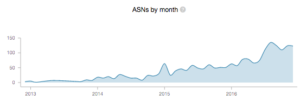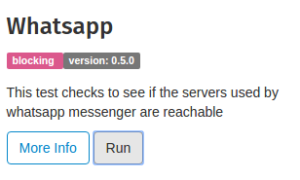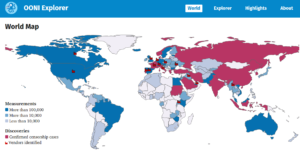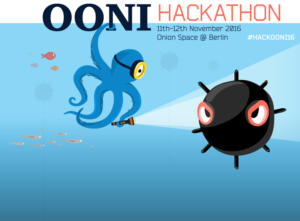The Open Observatory of Network Interference (OONI) is a free software project under The Tor Project that aims to uncover internet censorship around the world. Recently we published an overview of OONI which can be found here.Today we are providing some OONI highlights from 2016. These include our research findings in collaboration with our partners, …
January 2017 archive
Jan 28
Kenya: Censorship-free internet?
Over the last five months we ran OONI tests in Kenya almost every day to examine whether internet censorship events were occurring in the country. Hundreds of thousands of network measurements were collected and analyzed. 1,357 URLs were tested for censorship, including both international websites and sites that are more relevant to Kenya (e.g. local …
Jan 28
The State of Internet Censorship in Malaysia
In light of recent censorship events in Malaysia, the Open Observatory of Network Interference (OONI), in collaboration with Sinar Project, conducted a study to examine whether internet censorship events were persisting in the country and, if so, to collect data that can serve as evidence of them. This study was carried out through the collection of …
Jan 28
New OONI tests examine the blocking of WhatsApp and Facebook Messenger
Today the Open Observatory of Network Interference (OONI) project is excited to announce the release of two new software tests which are designed to examine the blocking of WhatsApp and Facebook Messenger. You can now run these tests to monitor the accessibility of these apps across time, and to collect data that can serve as …
Jan 28
Ethiopia: Evidence of social media blocking and internet censorship
Today, in collaboration with Amnesty International we are releasing a report that includes evidence of recent censorship events during Ethiopia’s political upheaval.View our joint research report here.View the pdf version of the report here.Publisher: Open Observatory of Network Interference & Amnesty InternationalPublication date: 14th December 2016
Jan 28
OONI releases new web UI: Run censorship tests from your web browser!
Today we are excited to announce the beta release of our new web-based user interface (WUI) that enables ooniprobe users to run censorship tests from a web browser!Whether you’re running ooniprobe from your desktop or a Raspberry Pi, you can now easily choose which tests you want to run through OONI’s web UI and run …
Jan 28
Tor at the Heart: The OONI Project
OONI aims to equip the public around the world with data that can serve as evidence of internet censorship events. Such data not only shows whether a site or service was blocked, but more importantly, how it was blocked, when, where, and by whom. This type of information can be particularly useful to the following: …
Jan 28
The Gambia: Internet Shutdown during 2016 Presidential Election
Last week we attempted to perform OONI network measurement tests in the Gambia to examine whether websites were blocked during its 2016 presidential election. But merely a few hours after we connected our probe to perform tests, it stopped working completely.We suspected that this was due to an internet shutdown. To confirm this, we referred …
Jan 28
OONI-dev meeting and hackathon 2016
Oonitarians are spread out across the globe, and OONI’s core team is no exception. We recently met in Berlin to hack on OONI’s software, work on our roadmap, and to have all those discussions that are more fruitful to have in person than on IRC. We also held a hackathon to engage new individuals with our …
Jan 28
Zambia: Internet censorship during the 2016 general elections?
In light of Zambia’s 2016 general elections, the Open Observatory of Network Interference (OONI), in collaboration with Strathmore University’s Centre for Intellectual Property and Information Technology Law (CIPIT), conducted a study to examine whether internet censorship events occurred during the election period. This study was carried out through the collection of network measurements from a local …







